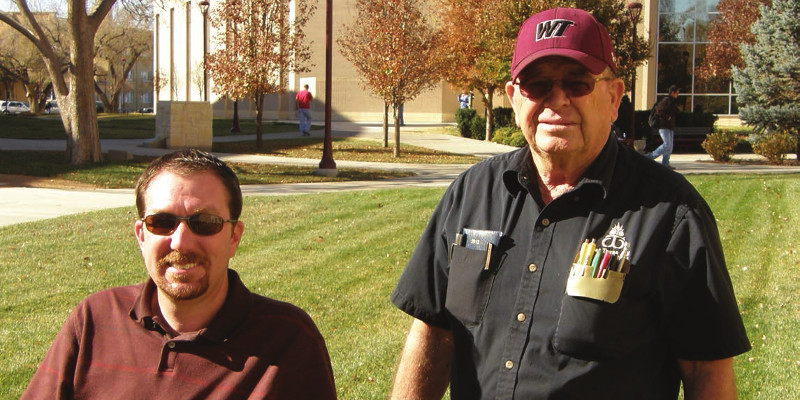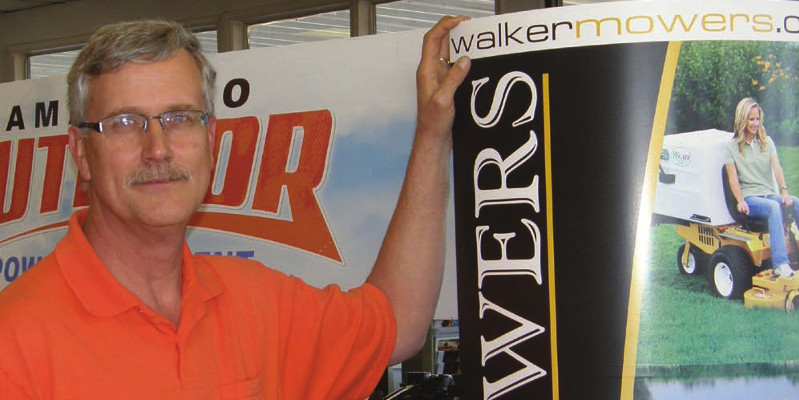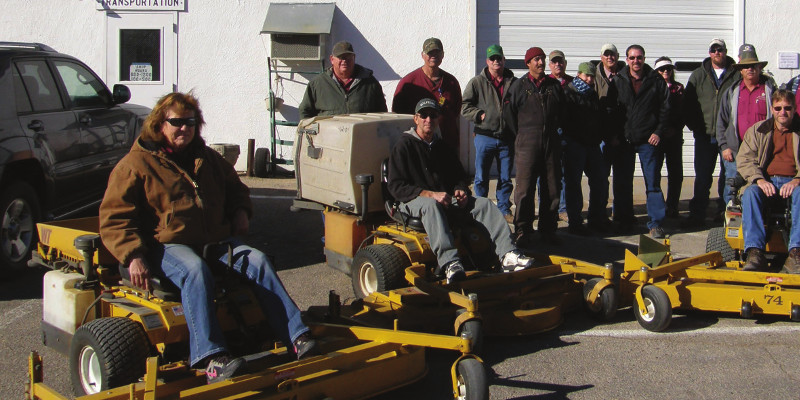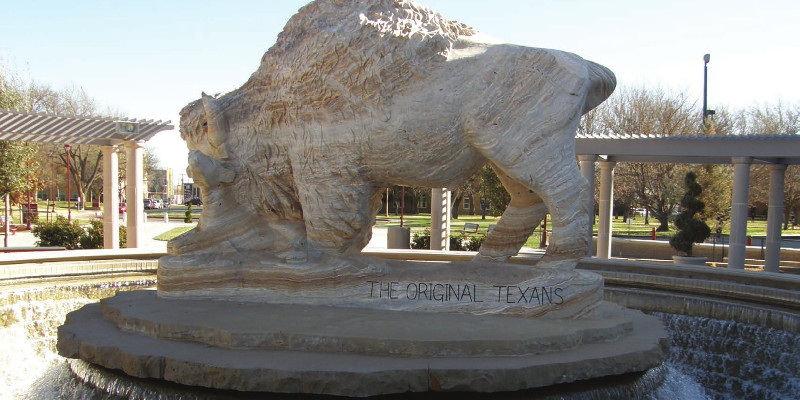Follow Route 27 south out of Amarillo, Texas for 20 miles and you will pass through Canyon, home of West Texas A&M. Situated on a beautiful 176-acre residential campus, the university has nearly 8,000 students, 252 full-time faculty, and 569 full-time staff members. Working behind the scenes to keep the campus in top shape are Grounds Manager, Larry Bedwell, and Transportation Manager, Bruce Bassett.
“Readying the campus for special events is one of our biggest challenges,” relates Bedwell, whose 17-member department maintains the landscape, clears the snow, and constantly polices the grounds. “The other is just keeping the turf mowed. We start in early March and go straight through until the end of November. Picking up leaves keeps us busy through Christmas.”
In the meantime, Bassett’s three-technician staff maintains the grounds equipment and keeps the school’s 119 vehicles in top running order. “All the vehicles and equipment are on a maintenance schedule,” Bassett explains. “We bring them in when they’re ready for oil and filter changes, tire rotation or other preventive maintenance.”
Bassett’s department couldn’t do this efficiently without computers, what he calls one of the biggest changes he’s seen over a near 30-year career with the university. Not surprisingly, the other two Texas Campus Sports Big Challenges for Grounds Crew involve campus growth and the equipment used to maintain the grounds.
The university was established in 1910 as a teacher’s college. Today it offers 62 undergraduate degrees, 41 master’s degrees and one doctorate. The campus has 45 buildings, with 205 adjacent acres set aside for future expansion.
“Our newest addition is a sports complex that features baseball and softball fields, tennis courts and a walk-around track, among other amenities,” says Bassett. “Because it is designed with artificial turf, the complex creates minimal work for Larry’s department.
“When I started working here, we didn’t need a huge contingent of mowers to maintain the turf,” Bassett continues. “In fact, all we used were two Cub Cadet mowers, a couple of reel mowers, and a Woods three-point hitch mower. The Woods mower is the only piece we still have.”
Ten Walker Mowers and five Grasshoppers now do the bulk of the mowing. Maintaining the turf around the classrooms and the main part of campus is the responsibility of the Walker Mowers equipped with GHS decks. Three of the 10 are fitted with side-discharge decks that do the wider-area mowing along with their Grasshopper counterparts. The Grounds Department still operates its first Walker Mower purchased from Amarillo Outdoor Power Equipment 14 years ago.
Bassett says the school selected Walker Mowers because they are very maneuverable and compact, something needed for mowing around the natural and manmade obstacles on campus. “Their debrishandling capability helps to keep the campus looking neat and comes in very handy for the fall leaf season. Eight of the 10 Walker Mowers feature Kubota diesel engines because of their longevity, and maintenance on them is very easy.”
Extreme Conditions
Bedwell and Bassett make no bones about West Texas weather. “You can get all the weather here in one day,” they remark. Unfortunately, moisture hasn’t been part of that equation. All last year, the area received only 2.5 inches of rain, and during June the thermometer hit the 100-degree mark every day.
The high temps and lack of moisture taxed landscapes, to the extent that the transportation manager lost seven big trees on his property at home. The extreme weather didn’t have the same effect on campus plant life or the grounds department’s twice-weekly mowing schedule. The turf, a combination of fescue and Bermuda grass, is irrigated.
Even though drought-plagued winters have been the norm in recent years, big snows have stormed through the area, unfettered by the flat landscape. “Working at a university where many students live in campus dorms means you’re on call 24/7,” Bedwell emphasizes. “In the winter, if we have a serious snow or ice storm, sidewalks and drives have to be cleared to ensure they’re passable. Typically, though, we get more ice storms than a lot of snow, although each year is different.”
A 1995 West Texas A&M graduate, Bedwell anticipates that heated sidewalks for new dorms will minimize ice concerns, at least there. For snow-covered sidewalks, he says rotary brooms are most effective since they don’t tear up the concrete.
With the sound of Walker Mowers doing some last-minute mowing and leaf pick up, Bassett and Bedwell stroll over to the center of campus. They pull up in front of a fountain near the “Old Main” administrative building. A huge “buffalo” (the university’s nickname) sculpture stands in the center of the fountain. “The statue was carved out of a 76,000-pound slab of granite,” Bassett exclaims. “It only weighs 36,000 pounds now.” Just goes to show you that even in the Texas panhandle, big is beautiful.











 Site Search
Site Search



